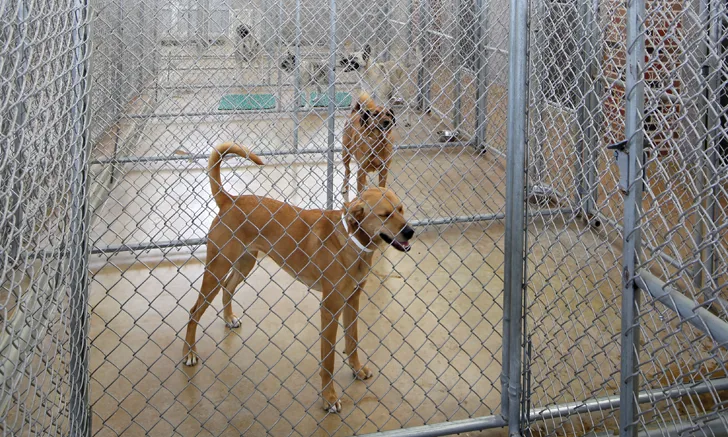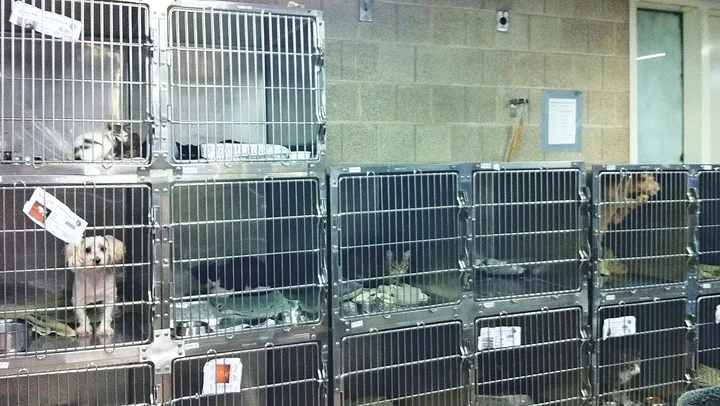Top 5 Strategies for Managing Shelter Infectious Disease Outbreaks
Annette Litster, BVSc, PhD, FANZCVSc (Feline Med), MMedSci (Clin Epi), Chicago, Illinois

Shelters provide refuge for young animals with immature immune systems and for animals that have recently experienced stressful conditions (eg, homelessness, abuse), which may increase the animals’ susceptibility to infectious disease.1 Animals entering shelters often have unknown clinical and vaccination histories, which adds to the challenge of maintaining a healthy population.
Transmission of infectious disease is often facilitated in cases of suboptimal housing conditions and crowding resulting from insufficient resources. Management strategies should be planned thoughtfully and in advance to make the best use of shelter resources—especially staff and volunteer time—and to achieve the best outcomes for all animals in their care.
1. Diagnosis & Isolation
The outbreak pathogen must be identified so that appropriate management strategies can be established. Laboratory results depend on the epidemiologic characteristics of the outbreak pathogen and the diagnostic accuracy (sensitivity and specificity) of the relevant commercially available tests. If possible, advice should be sought from a veterinarian with shelter medicine expertise on the choice of tests and interpretation of results.
FIGURE 1 Crowding and housing dogs and cats in close proximity can be significant stressors for shelter animals.

In addition, veterinarians have a critical role in planning how shelter resources should be allocated for diagnostic testing and post-mortem evaluations. Clinically affected animals should be isolated from the rest of the population and, if possible, handled only by staff and volunteers who do not have contact with the rest of the shelter population.
Isolation length is dictated by the clinical status of the affected animal and the shedding period for the pathogen involved.
2. Identification & Management of Exposed Animals
Daily rounds should be conducted to assess the clinical status of each animal and minimize the risk for infection in individual animals and the shelter population. Animals should be moved as necessary, based on clinical judgment and available history.
Clinically healthy animals with increased risk for susceptibility should be quarantined (Table). The length of quarantine is dictated by the incubation period for the causal pathogen. Rounds should start with low-risk groups and proceed to high-risk groups. Contact with each animal should be limited to balance adequate animal care with reduced risk for fomite transmission.
Risk Factors for Susceptibility to Infection in an Outbreak
Separate equipment should be used in each risk area; gloves, gowns, masks, and shoe covers should be changed between each examination. It is important to plan ahead to select the most suitable sites within the shelter for each risk category and to consider traffic flow to minimize fomite transmission and shelter capacity to minimize crowding and stress.
3. Environmental Decontamination
The 2-step deep-cleaning process should consist of a thorough cleaning to remove all organic matter, which can inactivate disinfectants, and disinfection using a product that is effective against the outbreak pathogen. It is important to adhere to the manufacturer-recommended contact time. Drying should be performed after the animal has permanently vacated the cage.
Ensuring that the cage is kept clean and comfortable during the animal’s stay—rather than performing daily deep cleaning—can save staff and volunteer time. Fomites from the animal can quickly cause contamination of the cage.
Disinfectant choice should be based on knowledge of the outbreak pathogen. For example, nonenveloped viruses (eg, canine parvovirus, feline panleukopenia virus, feline calicivirus, canine adenovirus) require a 1:30 household bleach solution. Quaternary ammonium compounds are unlikely to be effective; however, accelerated hydrogen peroxide and potassium peroxymonosulfate are somewhat effective against such pathogens.2
4. Protection of Newly Admitted Animals
Intake should ideally cease during an outbreak. If this is not possible, measures should be instituted to limit intake (eg, advising those who are surrendering animals to seek alternative accommodation until the outbreak is over).
Healthy animals entering the shelter should be housed separately from those in quarantine and isolation to create a “clean break.”3 A physical break of at least 25 feet is required to prevent the transmission of canine infectious respiratory disease; shelter personnel should be restricted to working only on one side of the clean break.3
Vaccination protocols for all healthy animals should continue as recommended.4-6 If a vaccine against the outbreak pathogen is available, all incoming animals should be vaccinated. Puppies and kittens should be vaccinated as young as possible, and vaccination should be repeated every 2 weeks7,8 while the animals remain at the shelter, based on the manufacturer recommendations for the individual vaccine.
Preventive treatment at intake with lime sulfur dips in ringworm outbreaks,3 coccidiostats in coccidiosis outbreaks,9 or antimicrobials in Streptococcus canis or Streptococcus equi subsp zooepidemicus outbreaks10 has been recommended.
5. Documentation & Communication
All shelter animals should be given a unique identifier (ie, name and/or code) at intake. The intake date, source, age, breed, and description of markings should be recorded. Details of clinical examination findings, vaccines and parasiticides administered, spay/neuter status, and other treatments should be updated daily. Housing information detailing the location of every animal and its movement throughout the shelter is required to identify in-contact animals and limit disease transmission.
All records should be backed up regularly. Written protocols are vital communication and education tools for shelter staff, volunteers, adopters, and foster families. They can encompass all aspects of infectious disease prevention, population management, and care of affected animals and should be individualized for each shelter population, its architecture and resources, and the outbreak infection.4
After each protocol has been created, quality-control officers can be appointed to enforce the protocols. However, the protocol should be updated regularly to best meet shelter needs.
In addition, the shelter should communicate with local, recent adopters, foster families, shelters, rescues, and veterinary hospitals to update them on the status of the outbreak and seek their cooperation to limit shelter intake if possible. Openness and transparency can build confidence and credibility and facilitate assistance by local community stakeholders.
Conclusion
Advance planning through vaccination, protocol development, foster networks, and local shelter partnerships is required to minimize the risk for infectious disease outbreaks in shelters. If an outbreak occurs, prompt and accurate pathogen identification, stratification of the shelter population by risk category, and avoidance of crowding can help limit disease transmission and reduce outbreak duration.